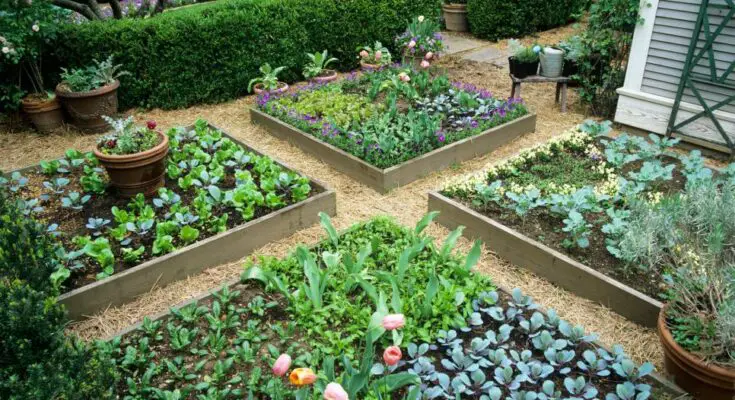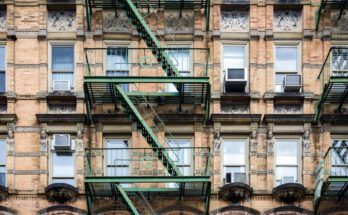There’s something magical about getting your hands dirty in the dirt. No matter what your experience is in the garden, the truth is that any gardener will agree that they’re always learning and continuously improving.
With that in mind, we’ve created this handy guide to the different types of garden beds. Let’s take a closer look at what kinds of beds you can use and how each one will help your garden to flourish.
Benefits of Garden Beds
Garden beds are excellent for good drainage. If the soil is raised above the ground level around it, raised garden beds can provide efficient drainage even if you live in heavy rainfall areas.
The soil also warms up quickly in raised beds, so you can continue planting even after the rain.
Garden beds also provide more ability to control burrowing pests. They are a popular way to grow food at home and offer the best chance for your plants to flourish.
In-Ground Garden Beds
The first type of garden bed is the in-ground bed, which is dug directly into the ground. These are leveled with the soil’s surface. You may also see a physical border or a visible edge around the bed.
However, the soil surface should not be significantly higher than the surrounding areas. The system of in-ground beds typically relies on the existing soil.
This is very important to consider, especially if you want to add amendments like other fertilizers or composts to improve soil quality. The best part about in-ground garden beds is that they are not very wide.
So, anyone of all ages can easily reach into the center of them to work the soil. You can also harvest them without having to step into them.
There is also a small requirement for materials to make these. You also do not need any imported soil or building materials.
It is also easy to change and expand the layout of your garden thanks to in-ground beds. If you use decent-quality soil, you will find it easy to dig and prepare your beds.
Finally, in-ground beds also make good use of all the nutrients and water stored in the existing soil.
The only thing to worry about is that in-ground garden beds need a site with workable and uncontaminated soil. Otherwise, you can benefit greatly from having these as part of your garden setups.
Raised Garden Beds
A raised garden bed is also like an in-ground bed with a significantly raised border or edge. This lets the soil in the bed build up. Or you can also bring improved soil to add above the existing soil.
It is important to note that raised garden beds do not have a solid bottom. These borders are made using materials like cinder blocks, redwood, logs, or plastic lumber.
It is always best to avoid pressure-treated wood or railroad ties because these can be toxic for humans and pets. Anyone can reach into raised beds for gardening without stepping into them.
This is what makes them such an excellent choice for gardening. Your garden bed can be kept in areas with poor soil. They also create clear bed borders to add a lot of definition to your garden setups.
Many people love raised garden beds because they can also be wheelchair accessible. The higher soil surface level makes gardening a smoother experience because you do not need to hurt your back or legs to tend to your plants.
Installing gopher wire to the bottom edge of the frame is also possible before you fill it with soil. However, raised garden beds can be slightly more expensive than other gardening options because they need specific materials to construct the edges.
You may also need to buy high-quality soil or soil moved from another area. Finally, the edges of raised beds can also make preparing and digging the dirt more awkward.
But the good news is that these are extremely popular and the easiest choice for people of all ages who love gardening and want the freedom to be creative with new garden ideas.
Garden Containers
Many people enjoy using garden containers because they come in different sizes. Unlike raised beds, they have bottoms. However, planting containers rely on drainage holes, so they must be made of materials that can stay stable if wet or left unattended outdoors.
Some of the best materials for garden containers are recycled plastic and ceramic. Garden containers are best if you want to grow squash or tomatoes that need to be in larger spaces that can hold several gallons of soil.
Smaller containers can be used to sprout some spinach, lettuce, strawberries, herbs, onions, and other shallow-rooted crops. The containers need a light planting mix instead of heavy soil.
The best way to do this is to make your own by using a third of coco peat, a third of horticultural sand, and a third of compost.
These can be set up on top of asphalt if you do not have a grassy garden to keep them in. Garden containers are flexible and can be strategically placed around the property to add personality to your home.
Tall or Small Containers
Tall garden containers can also be wheelchair accessible for homeowners to comfortably tend to their plants. Small containers also come with wheels to help you move them in and out, especially if you live in an area where you worry about bad weather or vandalism.
This is perfect if you have limited space to set up a garden. However, you must always think about the initial cost of the container and the materials used to make them.
This can make your garden containers very costly. You will also need a unique soil mix that can cost more money unless you make your own at home. Finally, garden containers also need to be fertilized and watered more than in-ground and raised garden beds.
Find the Right Garden Beds Today
Now that you know the primary types of garden beds, it is time to go shopping for the right product. The first step is always thinking about your gardening goals and how your space looks.
Then it would help if you considered accessibility to your garden beds and how you expect to move around them when you need to tend to plants regularly. If you enjoyed reading this garden bed guide, check out some of our other posts for more tips.



